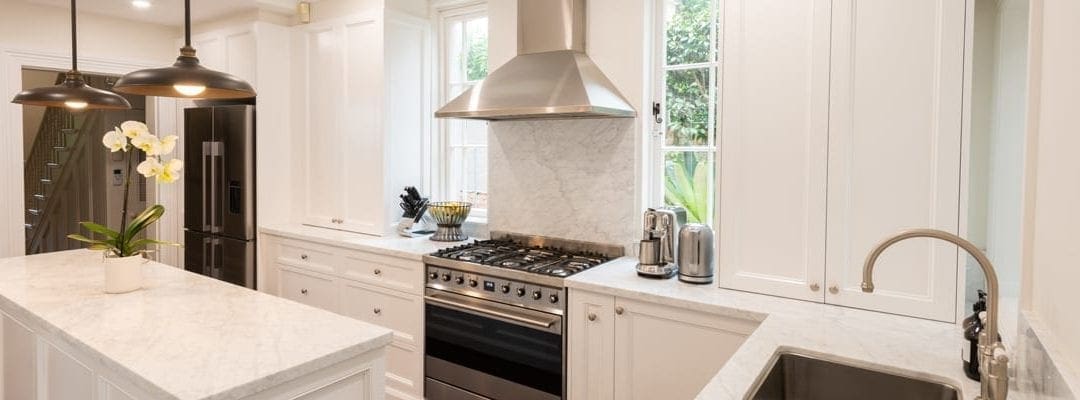A classic kitchen is the perfect blend of simplicity and style. It’s the happy medium between traditional and contemporary.
Because of it’s classic and timeless style, it is never seemingly out-dated and somewhat out of place in the majority homes of today. Whilst also not being too cutting-edge and transient, such that in a short space of time the enthusiasm and excitement for trendy features that were once all the rage has very quickly dissipated. There is definitely a place fin this world for all the various kitchen, styles as it would certainly be boring if they were all the same, but it is not hard to see why the enduring style of the classic kitchen continues to be the most popular choice.
Why choose a classic kitchen?
Choosing a classic kitchen is a solid choice for so many reasons. It’s timeless style and simple design means that it will stand tall as the treasured heart of the home for many years to come. Whilst the essential elements of a classic kitchen might be simple, that doesn’t mean it has to be boring. The beauty of a well-designed classic kitchen is that it is not only timeless but it becomes a chameleon. Quickly transformed to resemble many other kitchen styles, or perhaps an eclectic fusion of a few, with the addition of key accessories synonymous with those styles.
Typically classic but so much more
There are certainly benefits to having a classic kitchen style as a base that you can easily, frequently and relatively cost-effectively, refresh and update your kitchen style without having to undertake replacing the entire thing every time you grow tired of the style. This is great if you plan to stay put and hold on to your home, and your kitchen, for a little while. A classic kitchen is also perfect if and/or when it comes time to sell your home as it will appeal to a wide range of buyers, and it is also very easy for the new occupants to add their own touches to make it feel like their home.
Is a classic kitchen for me?
Narrowing in on what your kitchen design style is doesn’t always come easy. For many, they inevitably end up discovering that in fact there is not one clear textbook style that they prefer. It is actually very common to draw on influences from a few different kitchen styles in order to create your own unique kitchen space.
Not everyone is, or necessarily cares to be, overly creative and talented at deciding which pieces of their favourite kitchen styles should be included in their kitchen. Of course, the majority seek something that is well-presented and compliments the rest of their home. But at the end of the day, the most important thing for a kitchen is that it is practical and functional. And not just for your life as it is today, but for how it will likely be in 5 years time and 10 years time and maybe even 20 years time.
It is those core requirements of understated visual impact, practicality and function that withstand the test of time, that continues to make classic kitchens a popular choice.
What does a classic kitchen look like?
We have established that most kitchens ultimately comprise a combination of elements from a few different styles. So it should come as no surprise that the key features of a classic kitchen are not necessarily anything particularly revolutionary or unique, but rather a perfect collection of .ideas and concepts borrowed from other popular kitchen styles.
- You can’t go wrong with white
White is the quintessential colour choice for a classic kitchen. As one of the only colours that is always fresh and never goes out of style, and the perfect canvas for adding feature colours and accessories to personalise and style the space, white is the perfect choice for your classic kitchen.
- It doesn’t HAVE to be white, a neutral palette can be classic too
Whilst white might be the most popular colour choice for classic kitchens, it is not the only option. Many classic kitchens also use a neutral colour palette such as cream, light grey or stained timber for a variation on the theme.
- Keep the architectural details simple…
Classic kitchens are easily identified by their simple design and features. Nothing too ornate or overly embellished but certainly not textbook minimalist either. Rather, you’ll find some restrained detailing for that touch of classic, timeless style.
- …and the door style simple too
One of the most obvious visual components of any kitchen are the cabinet doors. Cabinet doors in a classic kitchen continue the idea of simple architectural details as mentioned above. Shaker style cabinet doors are typical of the classic kitchen style. Whereas both raised panel and flat panel doors are more usually found in the other popular kitchen styles.
- Tiled splashbacks are a common fixture
Tiled splashbacks, particularly subway tiles, are popular in classic kitchens, with classic white subway tiles being the most common. For something a little different, but in keeping with the classic style, opt for a variation in the tile dimensions or choose an alternative finish such as crackle, marbled or bevelled. Consider the effects of using different grout colours too as this can really affect the overall appearance of the finished splashback area.
- Stone bench tops draw the attention
Natural or engineered stone, particularly marble, bench tops are often the focal point of a classic kitchen. Either white or black bench tops are common for this style as the black can be used to add interest and break up the sometimes stark and clinical appearance of a predominantly white kitchen.
All of these timeless design and style elements combine to create stunning classic kitchens. The way in which a classic kitchen can easily be restyled to incorporate elements of one or a number of other kitchen styles makes it a smart and solid choice for your new kitchen.
The team of professional kitchen designers at Harrington Kitchens have a wealth of experience with designing and installing classic kitchens of uncompromising quality. Contact our team on 1300 662 112, submit an online enquiry or visit us at our Narellan or Bowral showrooms to discuss your dream kitchen with us today.


Recent Comments